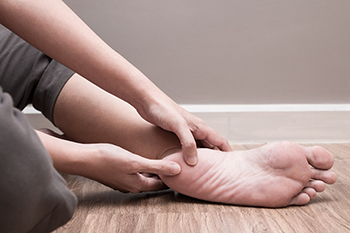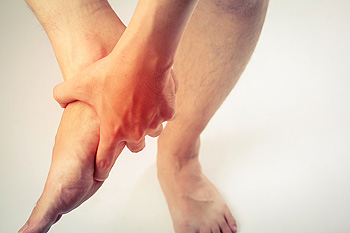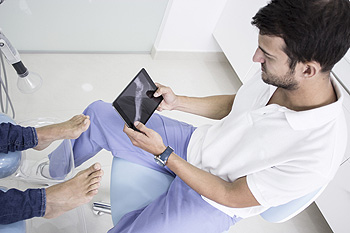One common cause of heel pain is a condition known as plantar fasciitis. Research indicates that plantar fasciitis accounts for approximately eighty percent of all cases of heel pain. Plantar fasciitis can produce severe pain and discomfort and can cause difficulty in walking. Changing the way you walk to minimize heel pain can have adverse effects on your posture and the biomechanics of your feet, knees, and hips which in turn, may lead to problems or pain in these areas. Plantar fasciitis can occur as a result of standing for extended periods of time, or from wearing shoes that do not fit correctly. Additionally, it can be caused by a sudden injury or from an abnormal foot structure. The heel can be affected by an Achilles tendon injury, which can gradually occur from overuse. This can affect the ability to point and flex the foot and can make it difficult to complete daily activities. There are several other causes of heel pain in addition to plantar fasciitis, and it is suggested that you schedule an appointment with a podiatrist who can effectively diagnose and treat heel pain conditions.
Many people suffer from bouts of heel pain. For more information, contact one of our podiatrists of Foot and Ankle Clinics, PA. Our doctors can provide the care you need to keep you pain-free and on your feet.
Causes of Heel Pain
Heel pain is often associated with plantar fasciitis. The plantar fascia is a band of tissues that extends along the bottom of the foot. A rip or tear in this ligament can cause inflammation of the tissue.
Achilles tendonitis is another cause of heel pain. Inflammation of the Achilles tendon will cause pain from fractures and muscle tearing. Lack of flexibility is also another symptom.
Heel spurs are another cause of pain. When the tissues of the plantar fascia undergo a great deal of stress, it can lead to ligament separation from the heel bone, causing heel spurs.
Why Might Heel Pain Occur?
- Wearing ill-fitting shoes
- Wearing non-supportive shoes
- Weight change
- Excessive running
Treatments
Heel pain should be treated as soon as possible for immediate results. Keeping your feet in a stress-free environment will help. If you suffer from Achilles tendonitis or plantar fasciitis, applying ice will reduce the swelling. Stretching before an exercise like running will help the muscles. Using all these tips will help make heel pain a condition of the past.
If you have any questions please contact our offices located in Woodbury, West St. Paul, and Edina, MN . We offer the newest diagnostic and treatment technologies for all your foot and ankle needs.



 Turf toe
Turf toe

